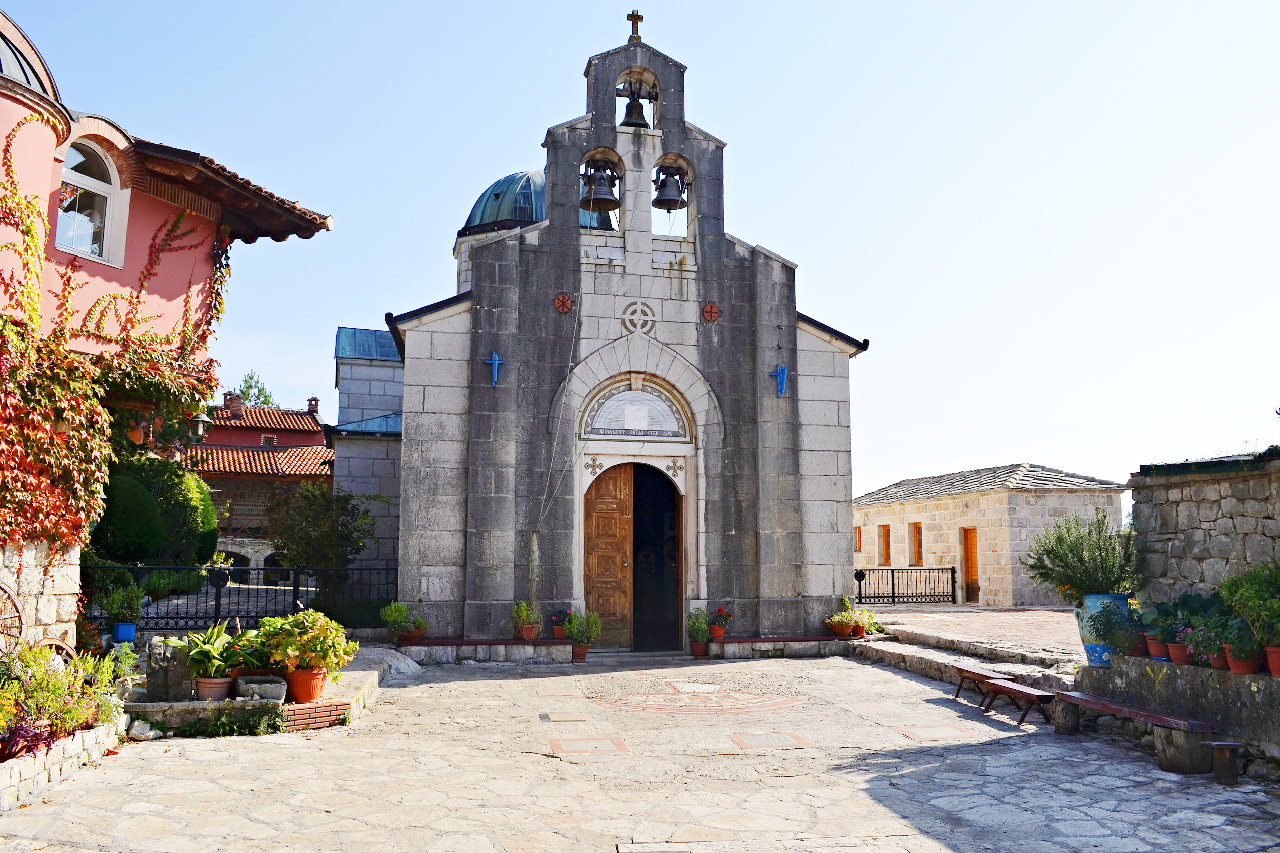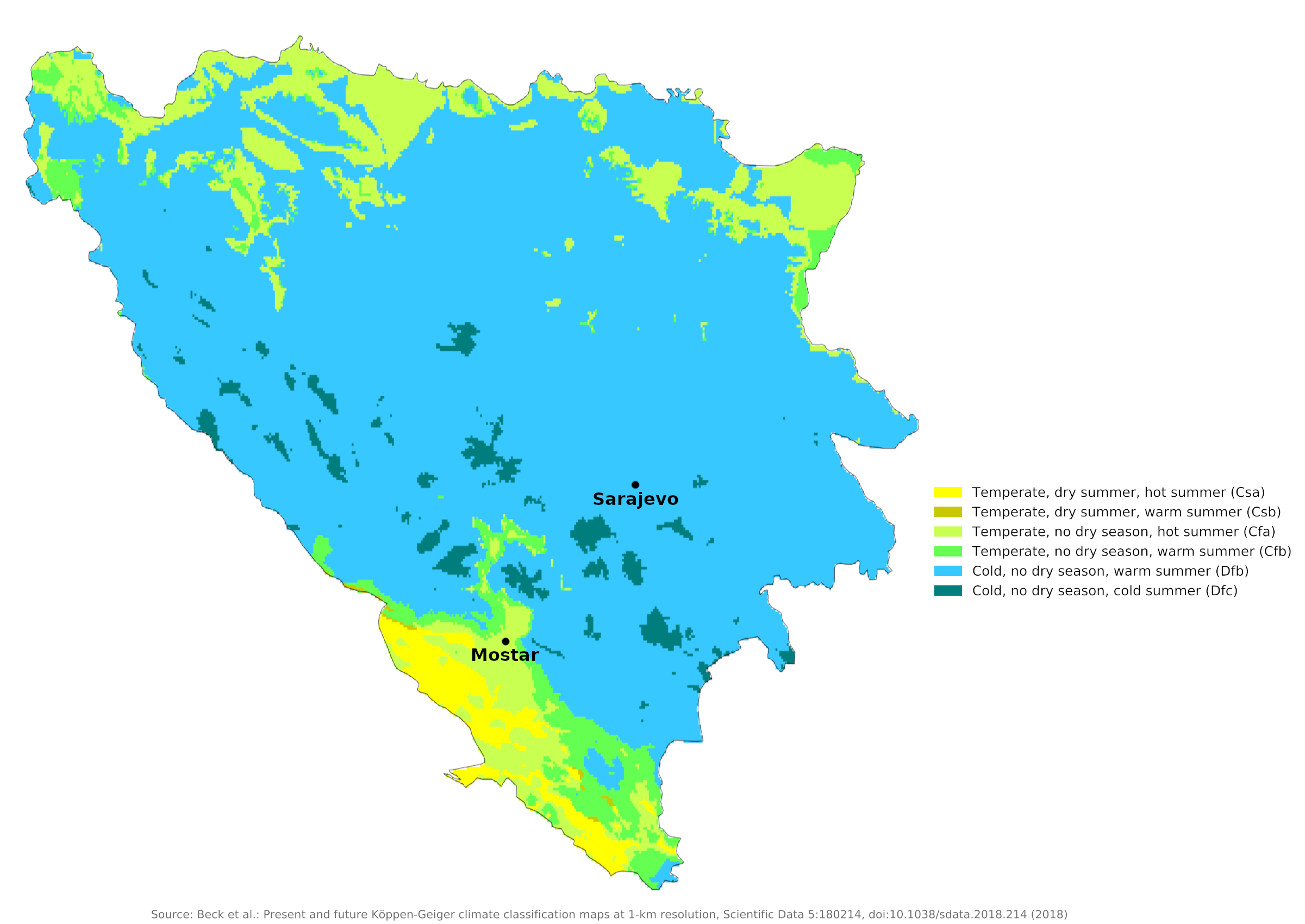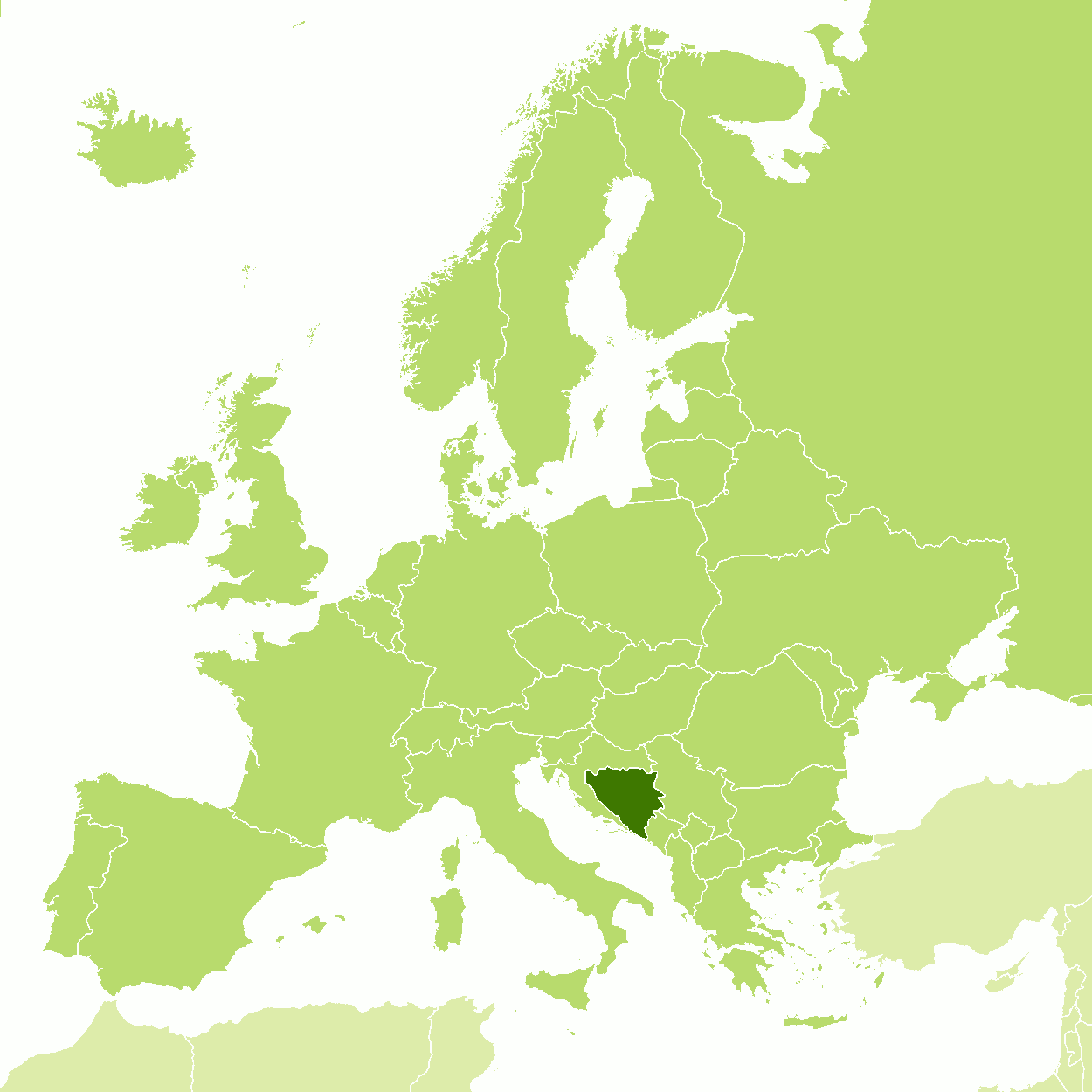The Climate of
Bosnia and Herzegovina
 Church in Tvrdos Monastery near Trebinje
Church in Tvrdos Monastery near Trebinje
Climate Map
 Climate map of Bosnia and Herzegovina
Climate map of Bosnia and Herzegovina
What is the climate of Bosnia and Herzegovina like?
The nation of Bosnia and Herzegovina is located in southeastern Europe, between the countries of Croatia, Serbia, and Montenegro.
With only 20 km (12 miles) of coastline on the Adriatic Sea, Bosnia and Herzegovina has weather more typical of inland eastern Europe, with cold winters and warm summers. Summer can be the wettest season. Much of the country is mountainous or hilly, rising to a height of 2,386 meters (7,828 feet), and winter snow lies for long periods in the higher regions.
Most of the country has warm summers and cold winters. In higher elevations of the country, summers tend to be short and cold while winters tend to be long and severe. In July, the mean temperature is around 20°C (68°F). January’s mean temperature is 0°C (32°F). Annual rainfall averages roughly 750 to 1,000 millimeters (30 to 40 inches).
Closer to the coast, winters tend to be short and rainy. In July, the mean temperature is 25°C (78°F). January’s mean temperature is 6°C (44°F).
Sarajevo is typical of conditions in the more mountainous parts of Bosnia and Herzegovina. Mostar shows the warmer conditions in the coastal southwest.
| Climate data for Sarajevo | |||||||||||||
|---|---|---|---|---|---|---|---|---|---|---|---|---|---|
| Month | Jan | Feb | Mar | Apr | May | Jun | Jul | Aug | Sep | Oct | Nov | Dec | Year |
| Average high °C (°F) | 3.7 (38.7) | 6.0 (42.8) | 10.9 (51.6) | 15.6 (60.1) | 21.4 (70.5) | 24.5 (76.1) | 27.0 (80.6) | 27.2 (81.0) | 22.0 (71.6) | 17.0 (62.6) | 9.7 (49.5) | 4.2 (39.6) | 15.8 (60.4) |
| Daily mean °C (°F) | 0.2 (32.4) | 1.8 (35.2) | 6.0 (42.8) | 10.2 (50.4) | 15.2 (59.4) | 18.2 (64.8) | 20.3 (68.5) | 20.4 (68.7) | 16.0 (60.8) | 11.7 (53.1) | 5.8 (42.4) | 1.2 (34.2) | 10.6 (51.1) |
| Average low °C (°F) | −3.3 (26.1) | −2.5 (27.5) | 1.1 (34.0) | 4.8 (40.6) | 9.0 (48.2) | 11.9 (53.4) | 13.7 (56.7) | 13.7 (56.7) | 10.0 (50.0) | 6.4 (43.5) | 1.9 (35.4) | −1.8 (28.8) | 5.4 (41.7) |
| Average precipitation mm (inches) | 68 (2.7) | 64 (2.5) | 70 (2.8) | 77 (3.0) | 72 (2.8) | 90 (3.5) | 72 (2.8) | 66 (2.6) | 91 (3.6) | 86 (3.4) | 85 (3.3) | 86 (3.4) | 928 (36.5) |
| Source: www.pogodaiklimat.ru | |||||||||||||
| Climate data for Mostar (1981–2010) | |||||||||||||
|---|---|---|---|---|---|---|---|---|---|---|---|---|---|
| Month | Jan | Feb | Mar | Apr | May | Jun | Jul | Aug | Sep | Oct | Nov | Dec | Year |
| Average high °C (°F) | 9.1 (48.4) | 11.1 (52.0) | 15.2 (59.4) | 19.5 (67.1) | 25.1 (77.2) | 28.9 (84.0) | 32.5 (90.5) | 32.7 (90.9) | 27.0 (80.6) | 21.3 (70.3) | 14.4 (57.9) | 9.8 (49.6) | 20.6 (69.0) |
| Daily mean °C (°F) | 5.6 (42.1) | 6.6 (43.9) | 10.1 (50.2) | 13.8 (56.8) | 19.0 (66.2) | 22.7 (72.9) | 25.8 (78.4) | 25.6 (78.1) | 20.5 (68.9) | 15.7 (60.3) | 10.2 (50.4) | 6.5 (43.7) | 15.2 (59.3) |
| Average low °C (°F) | 2.4 (36.3) | 2.9 (37.2) | 5.7 (42.3) | 8.8 (47.8) | 13.2 (55.8) | 16.7 (62.1) | 19.5 (67.1) | 19.6 (67.3) | 15.4 (59.7) | 11.5 (52.7) | 6.8 (44.2) | 3.6 (38.5) | 10.5 (50.9) |
| Average precipitation mm (inches) | 139 (5.5) | 120 (4.7) | 127 (5.0) | 118 (4.6) | 90 (3.5) | 70 (2.8) | 43 (1.7) | 60 (2.4) | 122 (4.8) | 152 (6.0) | 185 (7.3) | 176 (6.9) | 1,402 (55.2) |
| Source: World Meteorological Organization | |||||||||||||
References
- E. A. Pearce, Charles Gordon Smith, (1990) The Hutchinson World Weather Guide, John Murray Press. ISBN 1859863426
- Timothy L. Gall, (ed.), (2003), Worldmark Encyclopedia of the Nations, Eleventh Edition, Thomson Gale
- Hugh Chisholm, (ed.), (1911), Encyclopædia Britannica, Eleventh edition, Cambridge University Press
The Climate of
Bosnia and Herzegovina

In summary:
The climate features hot summers and cold winters. In higher elevations of the country, summers tend to be short and cold while winters tend to be long and severe. Along the coast, winters tend to be short and rainy.